Experimental prototype for an interactive dining table
Project Bicave is an IoT(Internet of things) Solution to help the first-time dater break the ice
Blind dating can be awkward. However, most people still want to date someone they meet on online dating services.
Online dating has grown in popularity in recent years. As a result, people start looking for their romantic partners through an online dating service. However, most of them do not feel comfortable with blind dating. That is why we came up with this IoT solution, Bicave — it’s an interactive table placed in restaurants to help people break the ice. This project is an experimental project, and we’re proud it got selected to the tech showcase at Academy of Art University’s annual Spring Show 2019.
My Role
In a team of three, I was primary in charge of the programming and prototyping.
- Connected sensors and projectors to create the whole network using Arduino, JavaScript, and maptastic.js
- Built prototypes from low-fi to hi-fi and ran user testing.
TOOLS / TECHNIQUE
Arduino, ESP32 Touch Sensor, Projector, Cooper tapes, HTML & JavaScript
RESEARCH & IDEATION
Looking into blind dating experiences
Based on interviews and surveys we took, we found some insights from blind dating experiences people had shared.
KEY FINDING — Where
Restaurants are not the best place
People prefer to do some activities together instead of just sitting there and eating. So even a cafe or a bar is better for a restaurant in terms of blind dating.
“The restaurant was good, but we had nothing to do except for talking and eating.”
KEY FINDING — When
The time waiting for food feels forever
People usually run out of questions after ordering food, so they usually just keep coming up with topics to break the ice.
“It was really awkward. So, I just kept talking while we're waiting for our food to come.”
DESIGN QUESTION —
How can we design to save the blind daters from an awkward situation while waiting for food?
We narrowed down the scope to focus on the awkward moments people experience when dating new people in a restaurant. After brainstorming, most of our ideas pointed to games that people can play in a restaurant to break the ice. Also, considering it'll be played in a restaurant, the game should be straightforward without disturbing other people. As a result, we decided to build an interactive table with an easy-to-answer Q&A game.
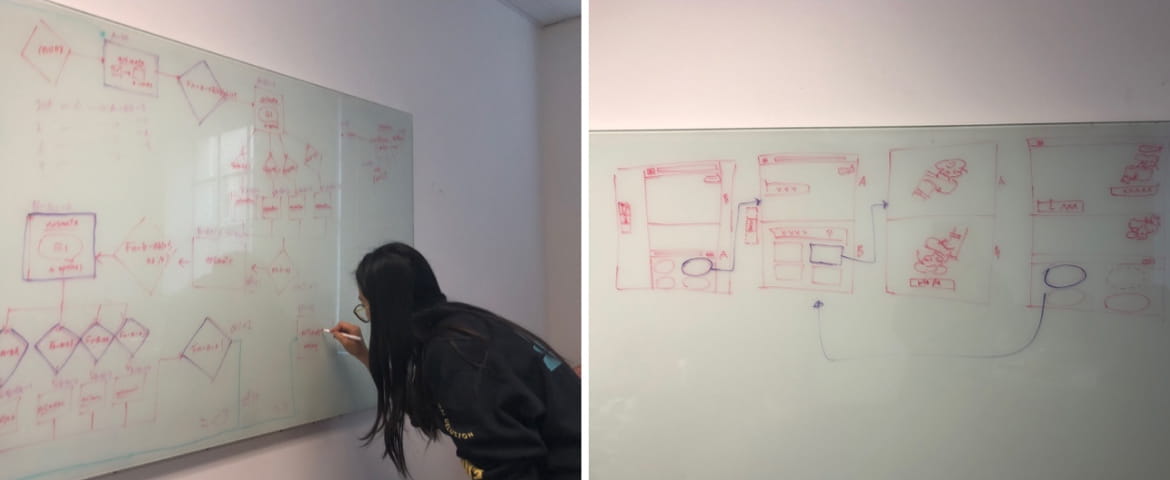
DESIGN ITERATION
Test, test, test!
Before we got into the hi-fidelity mockup, we tested concepts and functions. Then, to avoid the risk of rebuilding, we kept redefining our wireframes, flow charts, and the IoT architecture based on test results.
Conceptual test
Paper prototypes
First, we prototyped and tested ideas with papers and HTML web pages until we had a better plan for the whole user flow.
Functional test
Sensors and materials
Then, we tested functions primarily focused on sensors and materials before we started building the mockup for our interactive table.
Usability test
Make it more immersive
In order to create the best immersive experience, we tested usability from sensor sensitivities, projection brightness, colors, sounds, surface materials, etc.
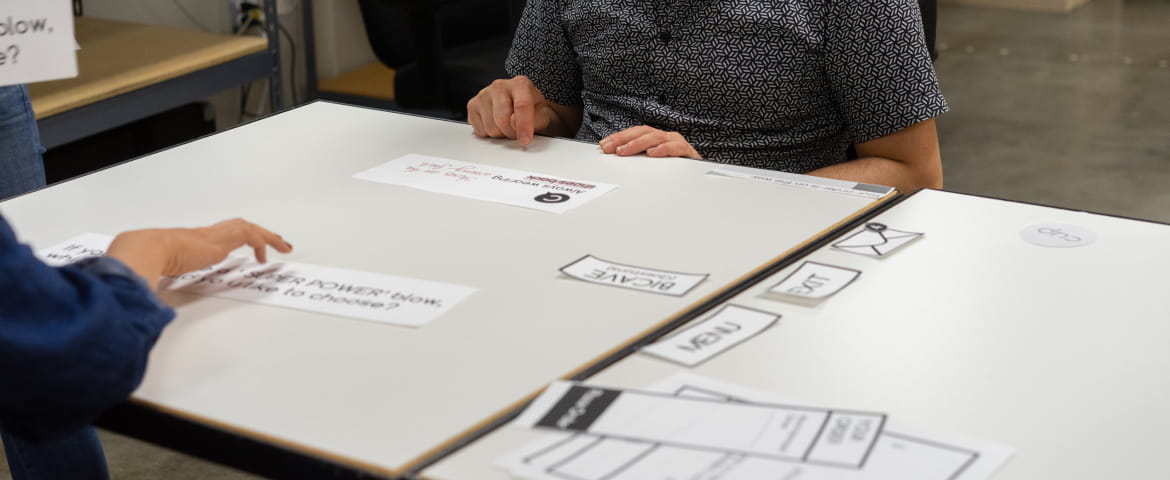
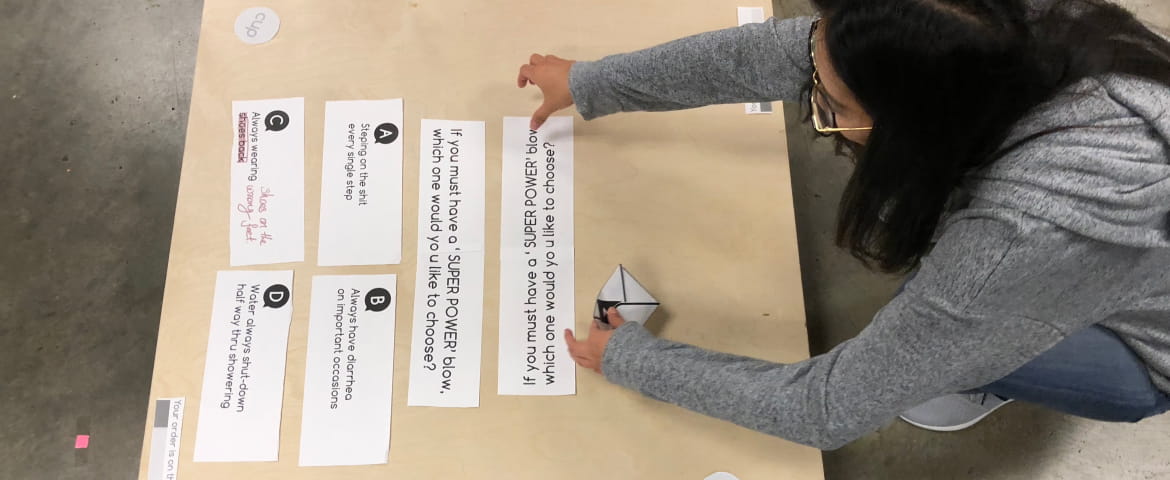
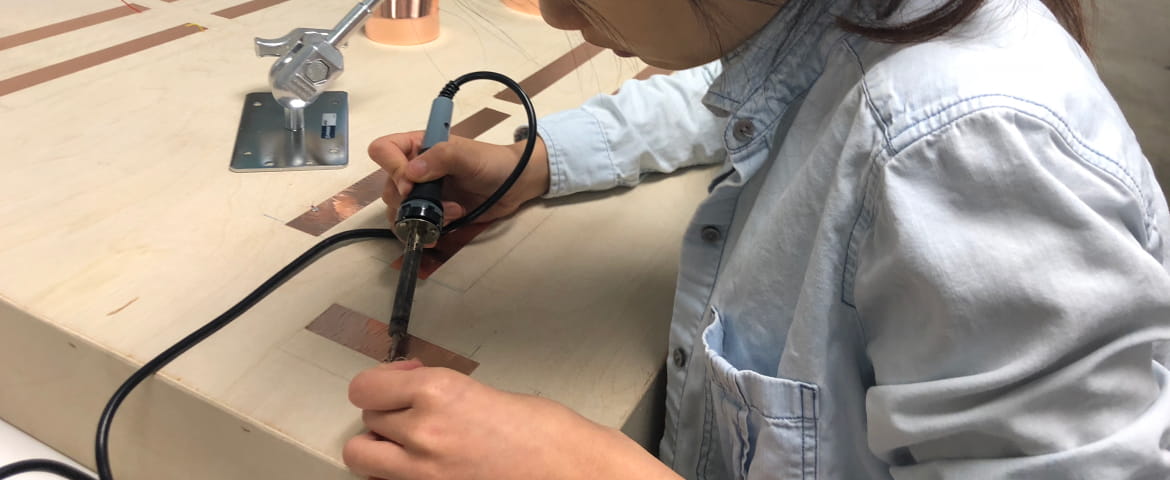
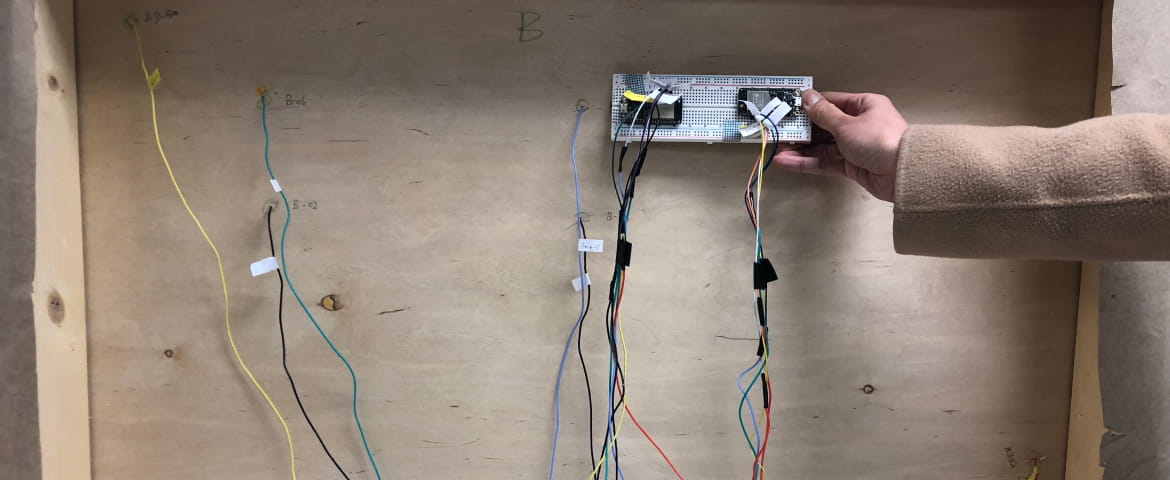
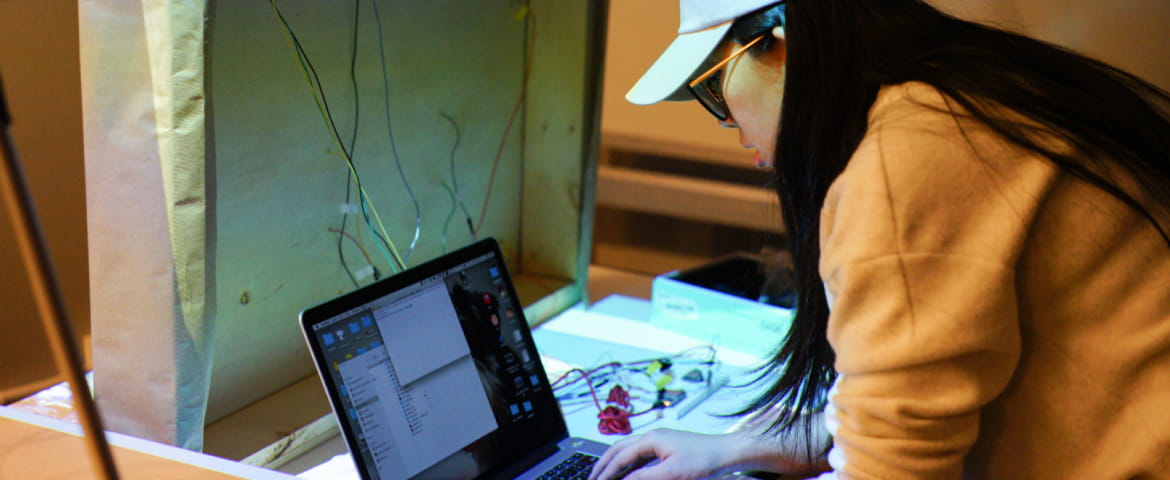
FINAL DESIGN
Bicave —
Turn the virtual chat into a real conversation
We turned a regular dining table into an interactive gaming table on which people can play games directly. The game was design to consists of a bunch of quirky questions, so it is easy and fun to answer.
Photos were shot in the tech showcase at Academy of Art University’s annual Spring Show 2019.
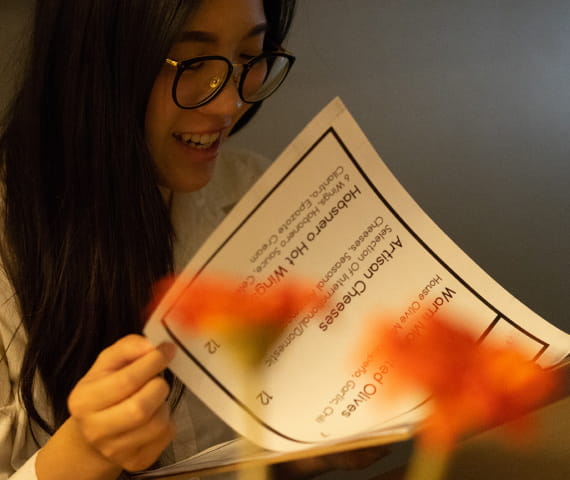
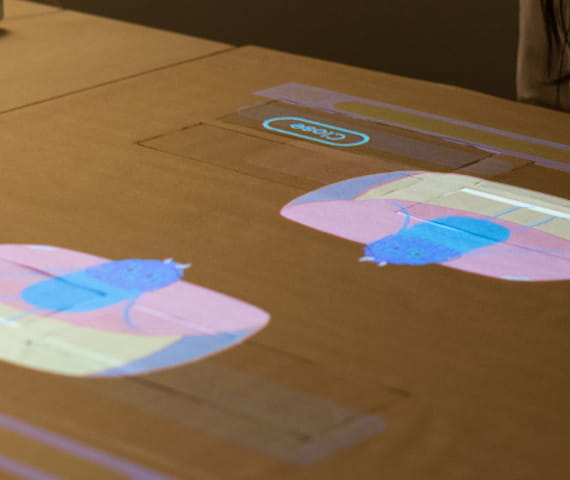
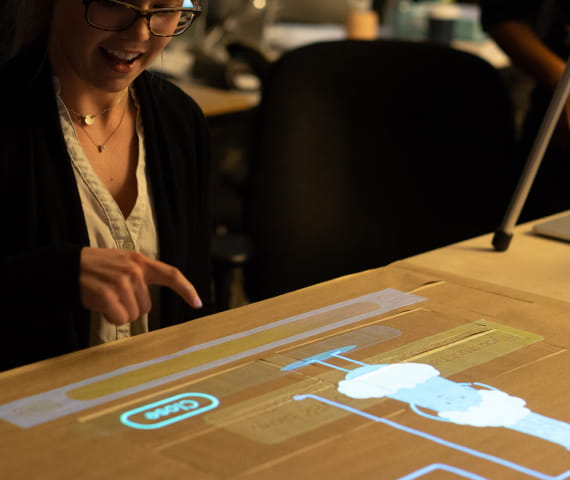
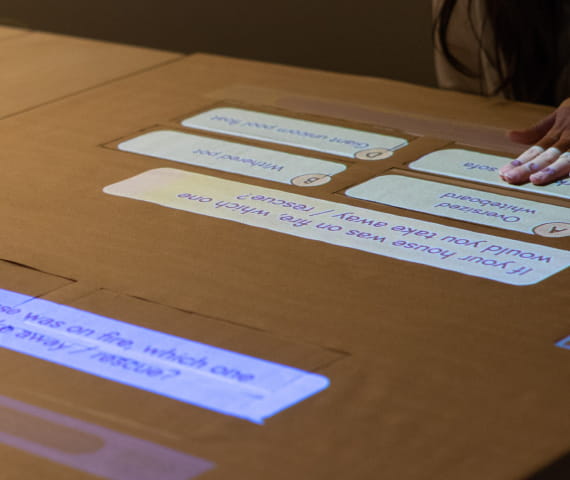
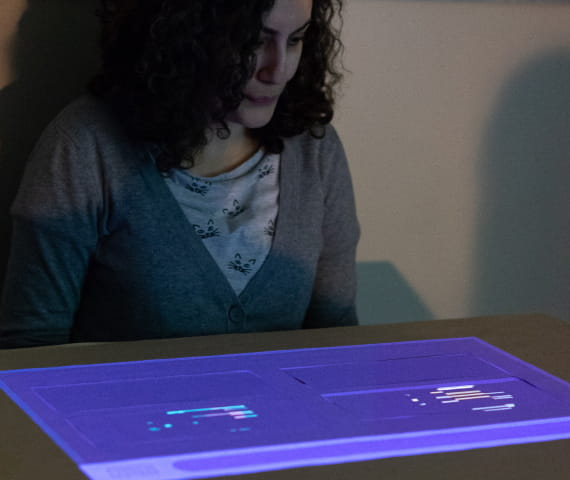
👇 Watch Bicave concept video.
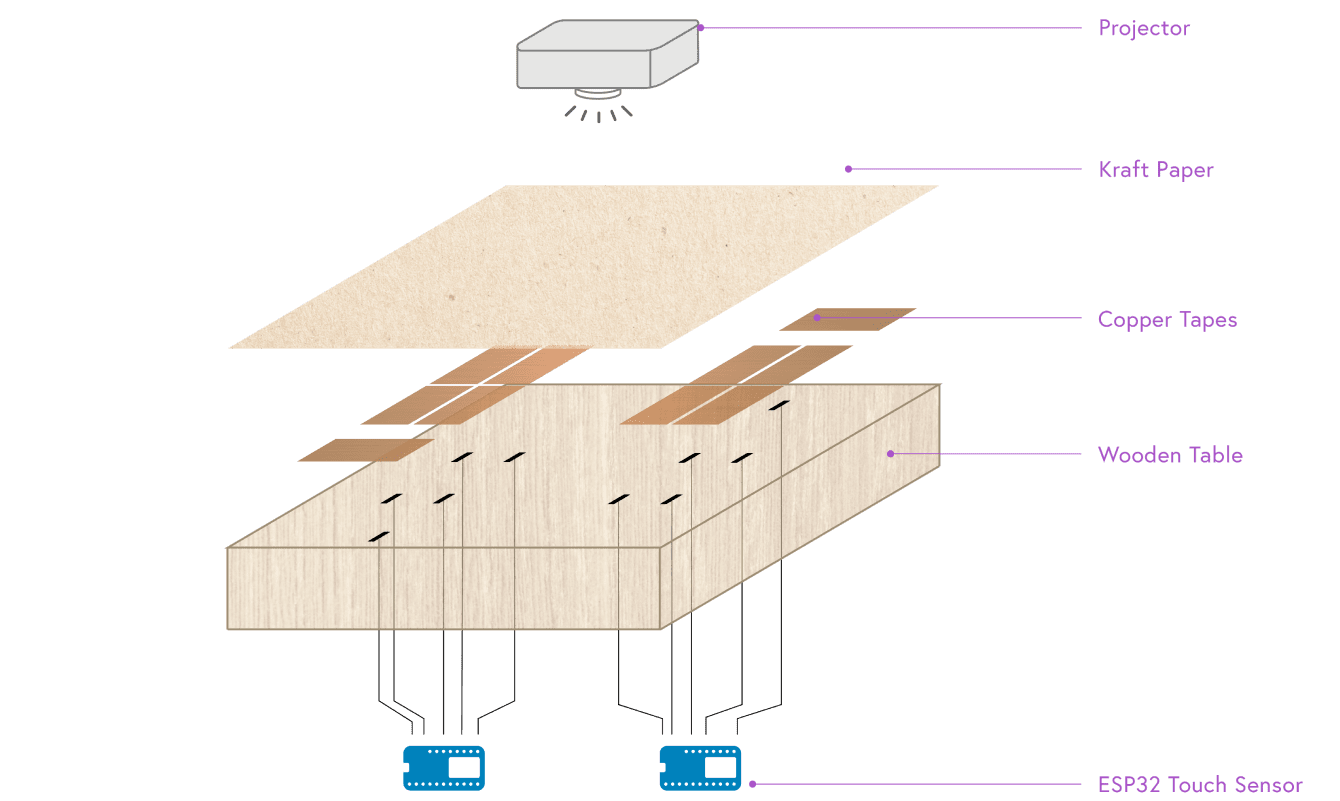
The IoT Architecture
To simplify the structure, we reused sensors. There're only 2 sensors in total and 5 inputs on each sensor. We used wires and cooper tapes to carry electricity, and on the top of cooper tapes, we used kraft paper as the screen surface for projection.
The flowchart
There’re a few things to consider while designing the flow —
- Mistake-proofing: This game was designed to be triggered by holding two inputs for 3 seconds. It helps prevent users from beginning the game by mistake.
- Ability to end the game anytime: Whenever the game starts/ends, need to read/write data.
- Tailored video and sounds reflect each answer: To not distract users, the sound only plays twice while the video keeps looping until the user triggers 'close'.
